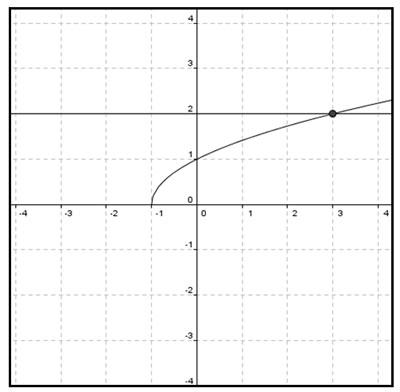
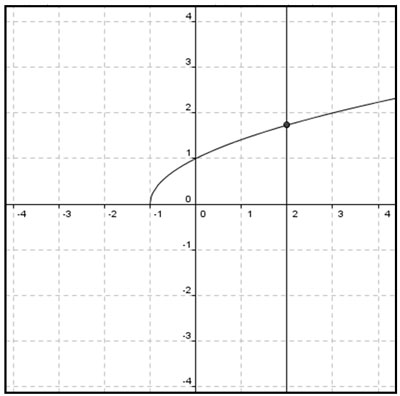
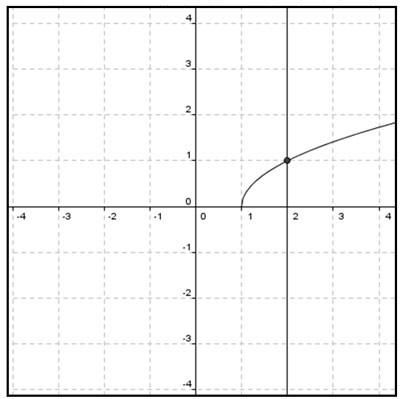





A
Correct! x = 3 is where √x + 1 is equal to 2.
B
Incorrect. You should be looking for where the square root function has a
y-coordinate of 2.
C
Incorrect. You should be looking for where the square root function has a
y-coordinate of 2.
D
Incorrect. This is the graph of
√x − 1 .
Use the graph shown below to solve -5 + 2√x + 2 for x.
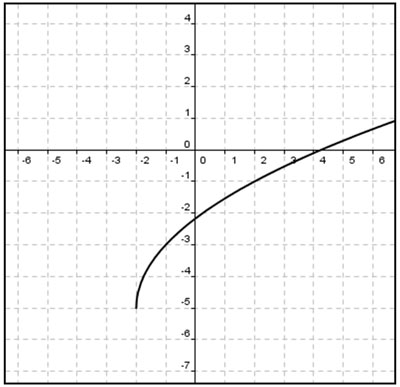
A. x = -3
Incorrect. You should be looking for a point on the graph that has a y-coordinate of -1.
B. x = -2
Incorrect. You should be looking for a point on the graph that has a y-coordinate of -1.
C. x = 2
Correct! The function is equal to -1 at the point (2, -1). At this point x = 2.
D. x = 4
Incorrect. You should be looking for a point on the graph that has a y-coordinate of -1.
Use the graph shown below to solve √3 − x = √2x + 6 for x.
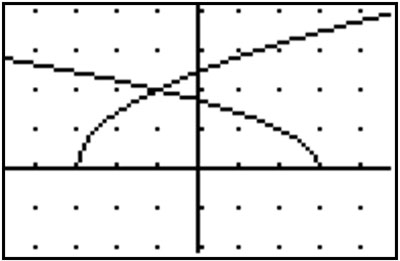
A. x = -3
Incorrect. You should be looking for the x-coordinate of the point of intersection on the graph
B. x = -1
Correct! x = -1 is the x-coordinate of the point of intersection and makes the square.
C. x = 2
Incorrect. You should be looking for the x-coordinate of the point of intersection on the graph.
D. No solution
Incorrect. There is an intersection, therefore there is a solution, x-coordinate of the point of intersection on the graph.
Which of the tables shown below can be used to find the solution of 6 − 2√x + 3 = -2?
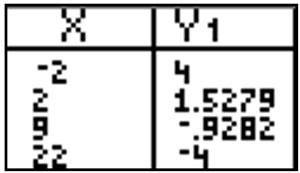
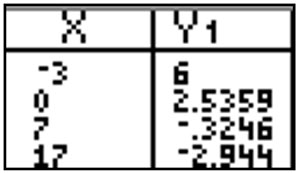
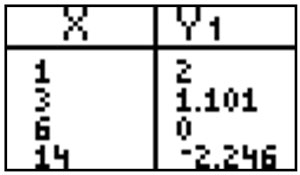
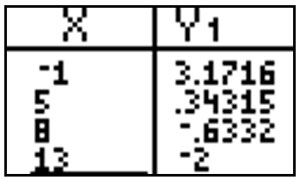
A
Incorrect. You should look for an ordered pair that has a y-coordinate of -2. The x-coordinate of that ordered pair is the solution of the equation.
B
Incorrect. You should look for an ordered pair that has a y-coordinate of -2. The x-coordinate of that ordered pair is the solution of the equation.
C
Incorrect. You should look for an ordered pair that has a y-coordinate of -2. The x-coordinate of that ordered pair is the solution of the equation.
D
Correct! This table contains x = 13 which is where the function is equal to -2.
Tsunamis are usually created when there is an earthquake below the ocean floor. Weather forecasters want to be able to predict how fast tsunami waves are moving. The speed a tsunami is moving depends on the depth of the ocean. This relationship can be represented by the function s = 3.17√d where s is the speed of the wave in meters per second and d is the depth of the ocean in meters.
Use the table to approximate how deep the ocean would have to be to produce a tsunami that is moving about 90 meters per second?
|
d
|
e
|
|
630
|
78
|
|
680
|
81
|
|
730
|
84
|
|
780
|
87
|
|
830
|
89
|
|
880
|
92
|
|
930
|
95
|
|
980
|
97
|
|
1030
|
99
|
|
1080
|
102
|
A. 94 feet
Incorrect. Did you notice that the depths in the table lie between 630 and 1080 feet? Go back and try again.
B. 830 feet
Incorrect. From the table this is the depth for 89 meters per second.
C. 845 feet
Correct! Since 90 lies between 89 and 92, the depth should be between 830 and 880 feet.
D. 880 feet
Incorrect. From the table this is the depth for 92 meters per second.